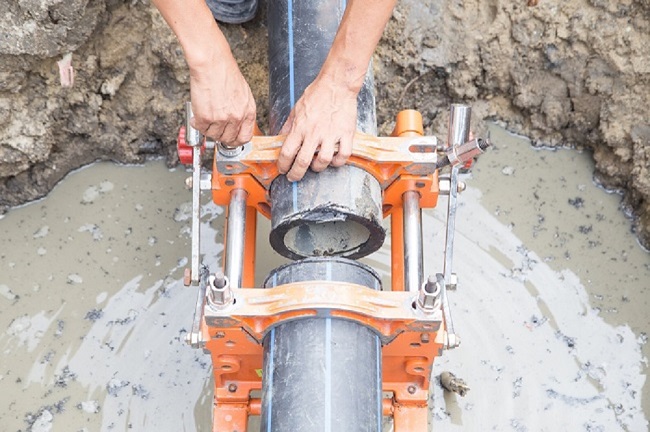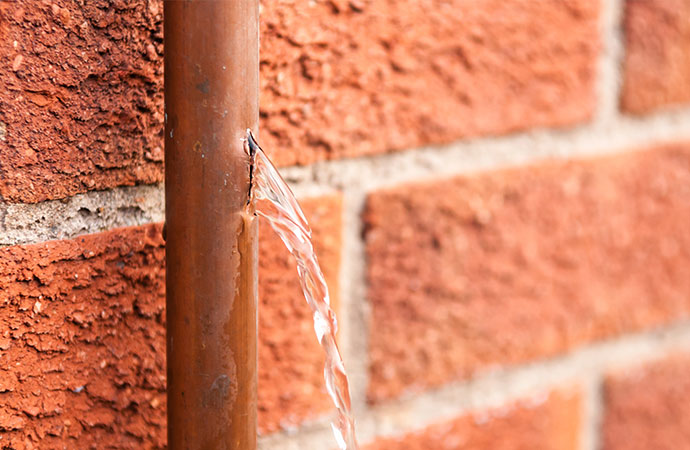The Art of Swift Response: Spotting and also Repairing a Burst Pipe
The Art of Swift Response: Spotting and also Repairing a Burst Pipe
Blog Article
What're your beliefs on How to Install and Connect a New Dishwasher?

A burst pipe is a major emergency; you can only stand as you watch water you pay dearly to rejoin with the planet. In even worse situations, you notice a pool on your kitchen floor, which is a great trip risk, particularly if you have kids around. If the pipe that burst was in your walls, trouble: you may need to repaint that entire area.
Just how can a tragedy like a ruptured pipeline be prevented and managed? Well, by listening to your specialist emergency plumbings as well as adhering to these guidelines.
How do I understand when my pipelines have ruptured?
Varying water pressures
Pipelines do not simply burst in a day. You might have noticed that your cooking area tap or shower doesn't run quickly when you turn the faucet. It might stop briefly for a couple of seconds and after that blast you with even more force than common.
In other circumstances, the water may appear normal initially, after that drop in stress after a few seconds.
Damp walls and also water stains
Prior to a pipeline bursts, it will certainly leak, a lot of times. If this relentless dripping goes unnoticed, the leak might graduate right into a broad gash in your pipeline. One very easy way to prevent this emergency is to watch out for wet wall surfaces ad water discolorations. These water spots will certainly lead you right to the leak.
Puddles under pipes as well as sinks
When a pipe ruptureds, the discharge forms a pool. It may show up that the puddle is growing in dimension, as well as despite how many times you wipe the pool, in a few mins, there's another one waiting to be cleansed. Frequently, you might not have the ability to map the puddle to any kind of noticeable pipelines. This is a sign to call a specialist plumber.
Untraceable trickling noises
Pipe ruptureds can take place in one of the most unpleasant locations, like within concrete, inside walls, or under sinks. When your home goes silent, you might be able to hear an annoyingly consistent dripping noise. Also after you've examined your shower head and cooking area tap, the leaking might proceed.
Precious viewers, the leaking may be originating from a pipe inside your wall surfaces. There isn't much you can do about that, other than tell a specialist plumber.
Turn off the Water
When water ices up, it expands in quantity by about 9 percent. As well as it expands with incredible force: The stress inside pipes might go from 40 pounds per square inch to 40,000 psi! No pipeline can hold that much pressure, so it breaks open. The break might happen where the ice kinds, but regularly, it occurs where water stress finds a vulnerable point in the pipeline. That may be inches and even feet from the frozen area. Locate the water shutoff valve and switch off the water to prevent even more damage. You may also need to shut down the electrical power also, relying on where the leakages happens and also how huge it is.
Infected water
Many people presume a ruptured pipe is a one-way outlet. Rather the contrary. As water spurts of the hole or laceration in your plumbing system, impurities find their way in.
Your water might be infected from the source, so if you can, check if your water storage tank has any kind of problems. Nevertheless, if your alcohol consumption water is provided and purified by the local government, you need to call your plumber immediately if you see or smell anything funny in your water.
What do I do when I identify a ruptured pipe?
Your water meter will continue to run also while your water wastes. To lessen your losses, locate the main controls and turn the supply off. The water mains are an above-ground framework beside your residential or commercial property.
How to Fix & Detect a Leaking Pipe
How Do I Know if a Pipe is Leaking?
Leak detection tests can help you determine if your pipe has a leak. Even if you don’t see an apparent leak, you should still conduct leak detection tests regularly to save water and money—and prevent major damage to your home.
Water meter. It can be helpful to figure out what your usual water meter usage numbers are and then monitor them regularly. To monitor your meter, first, turn off all water faucets in your home. Check the meter and write down the numbers. In a few hours, check the meter again. If the numbers have changed, you have a leak. Water gauge. Use a water gauge to test your water pressure. Your showerhead should produce a certain amount of water pressure based on its model and design. If the pressure is lower than it is supposed to be for that specific showerhead, your home likely has a leak. Puddles. Look inside your bathroom, laundry, and kitchen sink cabinets. Puddles around the cabinets or around toilets, tubs, showers, and washing machines indicate the presence of a leaking pipe. You may also notice loose tiles, peeling or flaking paint, or mold caused by water accumulation. Napkin test. Even if you don’t see any puddles, you may still have a leak. You can test for water leaks in the bathroom, laundry, and kitchen by wiping below-sink connections with a napkin, paper towel, or piece of toilet paper. If it becomes damp, you probably have a leaking pipe under the sink. Discolored walls. Walls that are discolored—usually with brown or yellow stains—or bulging might mean that they have been impacted by water damage caused by a leaking pipe. Smell. A leaky pipe will create sitting water, and over time, that water may develop a musty smell. If your home smells musty, but you can’t locate the source, it may be due to a leak. Steps for Fixing a Leaking Pipe
A leaky drain can be remedied by tightening the pipe base, replacing the drain seal, caulking the rim, and tightening the pipe nut. Similarly, a leaking toilet pipe can be treated by tightening the packing nut. You may also need to replace the valve. A leaky faucet may just need tightening or replacement of the washers. If that doesn’t work, consider replacing your faucet. If your pipe has a hole in it, you may want to use a pipe leak sealer or pipe leak tape. This quick fix for water pipe leaks can also temporarily fix a copper pipe leak. https://www.ahs.com/home-matters/quick-tips/how-to-tell-if-pipes-are-leaking/

Hopefully you liked our excerpt about What to Know Before Installing a Dishwasher. Thanks for taking a few minutes to browse our posting. Be sure to take the time to promote this content if you appreciated it. Bless you for your time. Visit again soon.
Find Out More
Report this page